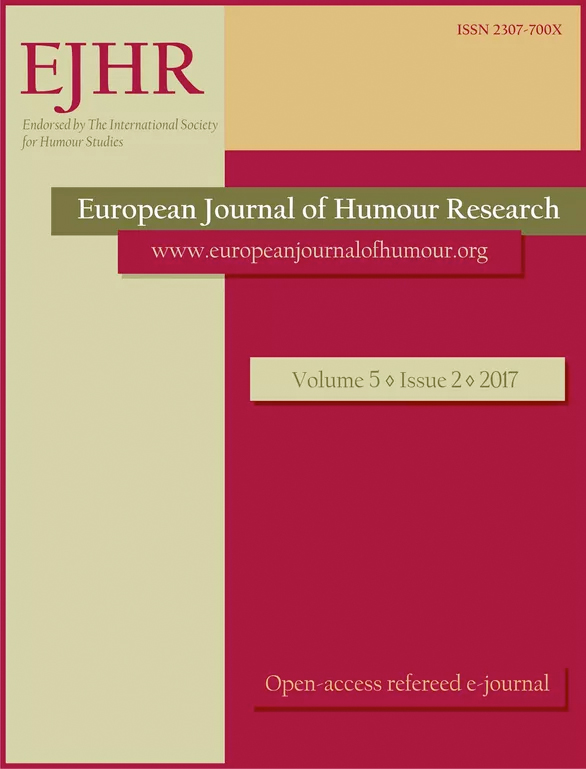
We kindly inform you that, as long as the subject affiliation of our 300.000+ articles is in progress, you might get unsufficient or no results on your third level or second level search. In this case, please broaden your search criteria.


Studies on humour have acknowledged that responses to jokes are important aspects of a joking exchange; however, investigation of joke recipients’ responses has received little attention from humour scholars. Moreover, the linguistic investigations of jokes have been limited to native speakers’ contexts, leaving ESL contexts out. Therefore, this study examines readers’ responses to a genre of jokes in Nigerian online spheres, Akpos jokes, with a view to characterising their forms and functions. Akpos jokes are humorous narratives created around an imaginary character called Akpos. Jokes are randomly collected from a blog and readers’ responses were derived from a Facebook page in which Akpos jokes are published. Using computer paralanguage and language mixing in writing the jokes and the responses, the jokes and the reactions to them mirror the online and the Nigerian ESL contexts in which they are situated. Readers use their responses to indicate affiliation, disaffiliation with the joke, or to introduce something that has nothing to do with the subject of the joke or humour. Readers also use their responses to argue for and/or against the humorousness the jokes.
More...
Launched in 2013, Vine is a popular microblogging service that allows users to record, edit, and share six-second videos that loop ad libitum, until another video is selected. At this time, the communicative, expressive, and semiotic affordances of Vine and similar services have still to be fully explored by users and scholars alike. Through a multimodal analysis approach drawing on New London Group’s (1996) work, this paper investigates how people construct humour on Vine by artfully arranging different modes of expression. The analysis focused on user-enacted humour, as opposed to captured comical scenes or bare samples taken from TV shows or movies. The study hypothesises the social construction of a novel humorous language that draws on extant forms of humour and a variety of modes and techniques derived from audio-visual media and computer-mediated communication, as users inventively exploit the framework provided by the Vine platform. Findings show that users create instant characters to amplify the impact of their solo video recordings, use Vine as a “humorous confessional”, explore the potential of hand-held media by relying on “one hand and face” expressivity (the other hand holding the device for the video “selfie”), and use technology, internet slang, internet acronyms, emoticons/emojis, and hashtags to convey humour and complement the messages of the videos they post on Vine. The goal of this study is an exploratory analysis of humour and its discursive functions in an emergent social medium by considering its affordances, as users find new and creative ways to harness its expressive potential.
More...
This paper seeks to demonstrate that both the media impact and political success of the Russian punk band Pussy Riot rest on their use of new media, on the one hand, and on an aesthetic principle of humour, on the other, or, more specifically, on a kind of humour that is both self-reflexive and subversive. Pussy Riot operate through a style of guerrilla communication that re-signifies signs and symbols for their own purpose in a self-ironical, comical manner. I will indicate the contradictions and ambiguities of various interpretive frameworks – which not only create humour but are particularly motivating factors in the (personal) decision to become politically active. The speed with which one can communicate within social networks made it possible that infectious laughter about the absurdity of the events in Moscow was able to spread so rapidly. Reassurance and the community’s solidarity were closely connected to the fun and joy of the individual internet user.
More...
The Holocaust was and remains a central trauma in Israel’s collective memory. For many years, the perception was that a humorous approach to the Holocaust might threaten the sanctity of its memory. Official agents of the Holocaust memory continue to believe in this approach, but since the 1990s, a new unofficial path of memory began taking shape in tandem with it. It is an alternative and subversive path that seeks to remember – but differently. In the last decade, YouTube has become a major cultural field including new humorous representations and images of the Holocaust. The article analyses a virtual phenomenon – “Hitler Rants” (or “Hitler Reacts”) parodies in Hebrew. These are internet memes in which surfers take a scene from the German film Downfall (Oliver Hirschbiegel 2004), showing Hitler ranting at his staff as the end of WWII approaches, and they add parodic subtitles in which Hitler rants about completely different things – current affairs and pesky little details. The incompatibilities between the visuals, the German screaming, and the subtitles turn Hitler into a ludicrous individual. The article objects to the notion that views the parodies as “cheapening” the Holocaust, and rather claims that they underscore humour’s role as a defence mechanism. Israelis, who live in a society in which the Holocaust memory is intensive and creates constant anxiety, seek to lessen reactions of tension and anxiety, even for a few minutes, and they do so through humour.
More...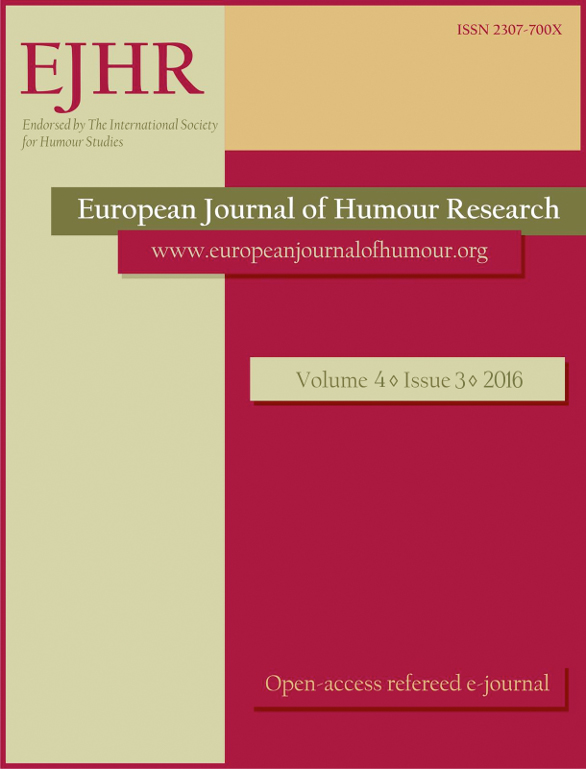
The purpose of this paper is to propose a psychosociological approach to the configuration of human bonds, on the one hand, and a methodological reflection on the analysis, on the other. The bonds are analyzed in their less explicit side, in order to reveal those emotional and representational elements which tend to express themselves an unclear and obscure way. The empirical research material has been a set of jokes told in different focus groups, with participants located in similar social positions. We analysed the associative chains developed in group dynamics, presenting methodological schemes for each particular analysis. The “latent accounts” arising from the analysis of each discussion group exhibit significant differences which are expressive of link models specific to each social context. Additionally, the phenomenon of the joke is confirmed as a valuable tool for social research.
More...

Researchers from the GRIALE group (Irony and Humour Research Group) have developed a theoretical method that can be applied to humorous ironic utterances in different textual genres, depending on the degree of the violation of conversational principles in conversation. In addition to this, the General Theory of Verbal Humor (Attardo and Raskin, 1991) will be taken into account in the analysis. Therefore, I will study irony and humour in conversational utterances in real examples of Peninsular Spanish obtained from the COVJA, (Corpus de conversaciones coloquiales [Corpus of Colloquial Conversations]) and CREA, (Corpus de Referencia del Español Actual [Reference Corpus of Present-Day Spanish]). The focus of this paper is then the application of the aforementioned theories to humorous ironic statements which arise in conversation. I will also examine the positive or negative effects caused by them, which will additionally verify if irony and humour coexist in the same conversational exchange, and if this has a communicative goal.
More...
The primary focus of this paper is to apply Discourse Type theory to stand-up comedy. To achieve this, the study postulates two contexts in stand-up joking stories: context of the joke and context in the joke. The context of the joke, which is inflexible, embodies the collective beliefs of stand-up comedians and their audience, while the context in the joke, which is dynamic, is manifested by joking stories and it is made up of the joke utterance, participants in the joke and activity/situation in the joke. In any routine, the context of the joke interacts with the context in the joke and vice versa. For analytical purpose, the study derives data from the routines of male and female Nigerian stand-up comedians. The analysis reveals that stand-up comedians perform discourse types, which are specific communicative acts in the context of the joke, such as greeting/salutation, reporting and informing, which bifurcates into self-praising and self denigrating.
More...
This article examines the uses and functions of humour in an online community of gamers and nonprofessional game designers who present and critique user-generated artefacts created with the popular game series LittleBigPlanet. Findings show that participants use humour and “good humour” to achieve a variety of social goals: to veil statements of ability and effort, alleviate negative comments, present user-generated content, attract new players, support other participants, and overall engender a smiling atmosphere that incentives collaboration, peer feedback, and social cohesion. Far from being a trivial ornament, humour emerges as a community building “cushioning glue” that connects, seals, and buffers different gears of computer-mediated interaction, contributing to defining the boundaries and the identity of the analysed online space.
More...
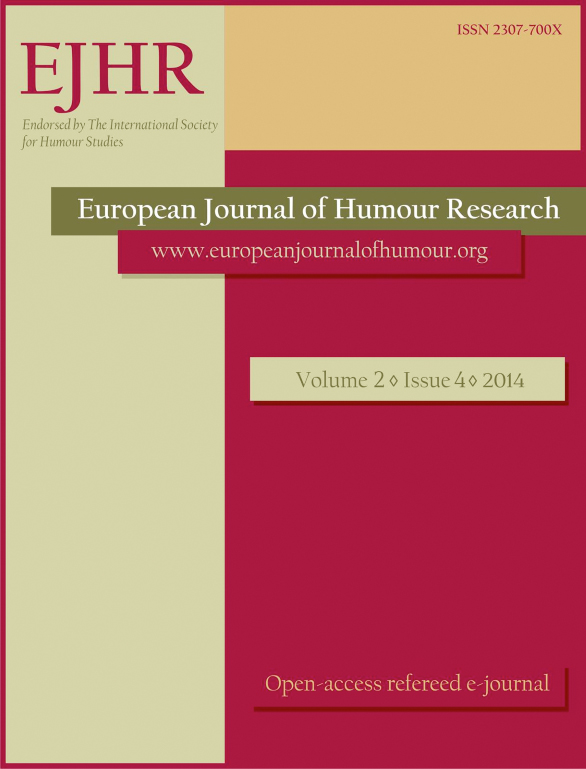
This special issue arises out of an annual conference of the Australasian Humour Studies Network (AHSN). These have been held for two decades, but despite that longevity and the fact that the word Australasian refers to Australia and New Zealand, it was not until 2014 that the first AHSN conference was held in New Zealand, with the theme “Anything Goes?”.
More...
In 2010, Brother a well-known local identity living on a busy street corner in Wellington, told court appointed psychiatrists he boogied with the dead and was enjoying life in 1984. Though academic writing on the homeless experience unanimously proposes that street life existence is essentially ‘no laughing matter’, and while Brother’s talk could be dismissed as the ramblings of a mad man, here I argue that his banter can be understood as displaying an acute sense of underdog humour (Coser 1959). Drawing from participant observational research spanning a three-year period and forming the empirical component of my doctoral work, I examine humour as a “quintessentially social phenomenon” (Kuipers 2008: 361) that is often particular to a specific time and place. Speaking to broader themes of sociality, spatiality, embodiment, domination and resistance, I reveal how humour is used by Brother to manage a life lived in public. I also consider how Brother’s jovial talk and actions disrupt mundane understandings of ‘normal’ boundaries. In arguing “agency and structure” collide in the case of Brother, I look at how this evokes a simultaneous “making, remaking, and unmaking” of the person (Hacking 2004).
More...
This paper examines the phenomenon of humorous Internet memes within the context of news and political culture, sometimes referred to as LOLitics. LOLitics are a category of digital texts created by ordinary individuals that, like most political humour, are usually responses to news events or gaffes committed by political figures. The analysis situates LOLitics as popular culture products that exist within the intersection between pleasure-driven ‘play’ and (arguably) genuine political discourse. LOLitics are prominent due to their spreadability and replicability, and the amount of texts being produced has visibly risen over the last election cycle. Internet memes have become one of the default ways to respond to particular situations online, and this certainly reflects the reaction towards news and political culture. The 2012 US Presidential election is applied as a case study in examining the significance of these Internet memes to everyday citizen discourse, and the relationships between ordinary citizens, the mainstream media, and politics. The results argue that humorous viral texts, both visual and verbal, reveal the potential power that ordinary people have in setting the agenda for newsmakers, and to communicate political criticism through popular culture.
More...
This paper introduces the Disaster Picture-Diary political cartoons of Asakura Yūzō which appear in the Japanese regional newspaper Fukushima Minpō. After the so-called 3.11 disaster’s triple blow of earthquake, tsunami, and multiple nuclear reactor meltdowns in 2011, intense public and media interest and debates erupted over: how to help the victims; how to rebuild; what to do about the ongoing nuclear problem; and what should be the future of direction the nation. Yet, cartoonists in national daily newspapers failed to get involved in much of this debate. They basically continued on as they had done before the disaster merely lightly mocking politicians, their eyes closed to wider problems. In contrast, Asakura’s cartoons which began in the wake of 3.11 in the disaster affected region, broke away from this mainstream form of cartoon discourse to comment on a much greater variety of post-3.11 issues using a much more diverse range of drawing styles. In this sense, though still seemingly restrained to an outside observer from a country with a more aggressive satirical cartooning, for Asakura it is definitely a case of “anything goes”. This paper gives an overview of the disaster, and mainstream political cartooning before and after 3.11. It then introduces examples of Asakura’s Disaster Picture-Diary political cartoons, contrasting them with mainstream national cartoons to underscore how his work differs. In concluding, a number of reasons for these differences are provisionally forwarded.
More...
There is a fascinating idiosyncrasy within New Zealand cartoonist’s depiction of Australia during the Great War. Running parallel to comradely images of fresh-faced ANZACs marching together, New Zealand cartoonists produced acrimonious sketches of their neighbour and ally as dysfunctional and even disloyal. These representations might be considered as charting the limits of neighbourly sentiments and good-natured humour. This article surveys the context, in history and humour, behind these depictions and questions how they fit within the wider panorama of New Zealand’s war effort and the humorous irreverence conventionally considered to be a key aspect of the trans-Tasman relationship.
More...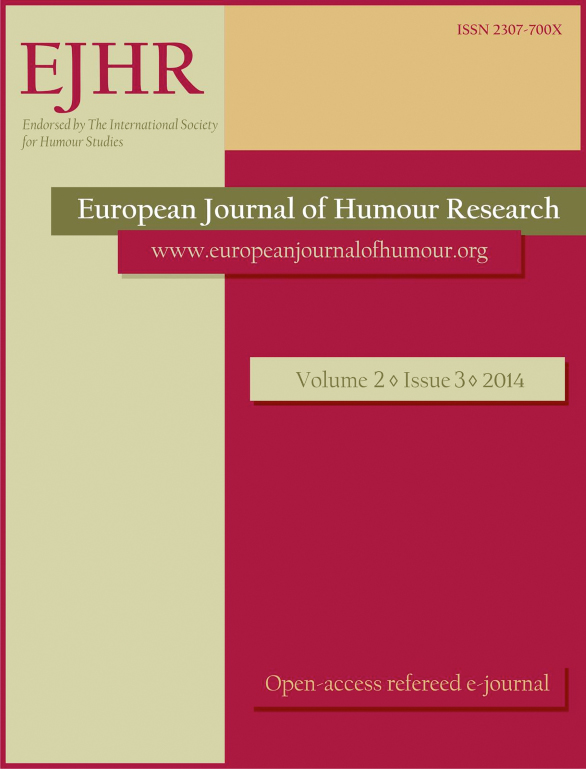
Socialism produces distinct forms of humorous ridicule that are relatively rare in capitalist, bourgeois democracies. These forms are arranged in a hierarchy that reflects the distribution of power in this type of social and political order, one which differs markedly from a bourgeois democracy or indeed even a traditional or dictatorial authoritarian society. Merely authoritarian societies lack the kind of over-riding ideology and central control of economic and cultural life that are the defining characteristics of socialism. Socialist humorous ridicule is cruel at the top; then comes an aggressive and admonishing, but in intention humorous, official ridicule employed by the state in pursuit of centrally defined political ends. Finally, there is the ridicule by ordinary people of the elite and the social order they have imposed on the masses who respond by spontaneously and autonomously inventing and circulating innumerable jokes and anecdotes. This pattern is a product of the exercise of a monopoly of political and economic power by the leaders of the Communist Party and the distinctive political inequality that characterises socialism, an inequality based not on ownership but on differential access to the power of the state. The rulers of merely authoritarian societies that were not socialist such as Franco’s Spain, Pinochet’s Chile or Afrikaner South Africa did not and could not attain the same kind of hegemony that was possible under socialism because there existed economic, religious, scientific and even legal institutions that enjoyed a substantial degree of independence from their political rulers. Accordingly, they did not exhibit to anything like the full extent the patterns of humour to be found under socialism. The aggregate patterns of humour in socialist societies must be treated not as interactions between individuals but as ‘social facts’ to be understood in relation to other social facts, notably the nature of political power, with both sets of social facts being contrasted with those to be found in the capitalist democracies that are the antithesis of socialism.
More...
A corpus of 750 product reviews extracted from Amazon.com was analyzed for specific lexical, grammatical, and semantic features to identify differences between satirical and non-satirical Amazon.com product reviews through a statistical analysis. The corpus contained 375 reviews identified as satirical and 375 as non-satirical (750 total). Fourteen different linguistic indices were used to measure features related to lexical sophistication, grammatical functions, and the semantic properties of words. A one-way multivariate analysis of variance (MANOVA) found a significant difference between review types. The MANOVA was followed by a discriminant function analysis (DFA), which used seven variables to correctly classify 71.7 per cent of the reviews as satirical or non-satirical. Those seven variables suggest that, linguistically, satirical texts are more specific, less lexically sophisticated, and contain more words associated with negative emotions and certainty than non-satirical texts. These results demonstrate that satire shares some, but not all, of the previously identified semantic features of sarcasm (Campbell & Katz 2012), supporting Simpson’s (2003) claim that satire should be considered separately from other forms of irony. Ultimately, this study puts forth an argument that a statistical analysis of lexical, semantic, and grammatical properties of satirical texts can shed some descriptive light on this relatively understudied linguistic phenomenon, while also providing suggestions for future analysis.
More...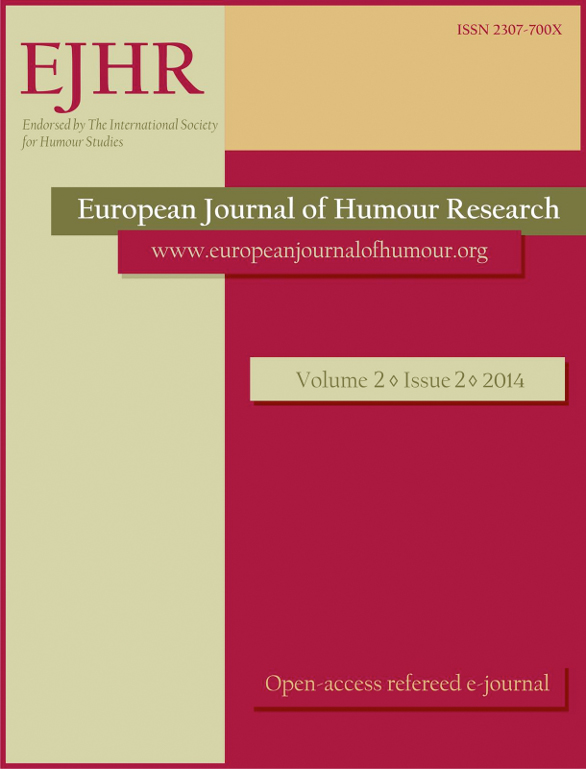
The growing interest in humour within the field of Cognitive Linguistics during the past few years has led to the conclusion that humour exploits inferences through linguistic imagery and is highly creative. Following Yus (2003: 1299), we assume that humour uses discourse markers that allow the audience to see that what is being said should not be taken seriously. In this study, based on a large corpus of examples extracted from two American t elevision series ( House M.D. and The Big Bang Theory ), we add a yet unexplored multimodal perspective that of facial expressions accompanying humorous utterances, particularly pertaining to sarcasm and hyper understanding. More specifically, we present a qualitative and quantitative analysis of raised eyebrows used in interactional humour, arguing that they play a role in switching the context to a humorous interpretation. Our study analy ses humorous utterances against the background of Clark’s layering m odel and Fauconnier’s mental spaces theory. We illustrate how raised eyebrows function as “gestural triggers” allowing the hearer to make the connection between explicature (i.e. what is explicitly communicated by an utterance; cf. Carston 2002, 2004) and implicature ( i.e. assumptions that are not explicit and that the hearer has to infer from the contextual environment cf. Grice 1989). As such, we show that raised eyebrows play an important role in the understanding of the humorous message because they gu ide the hearer to interpret utterances in a humorous way and they contribute to meaning construction.
More...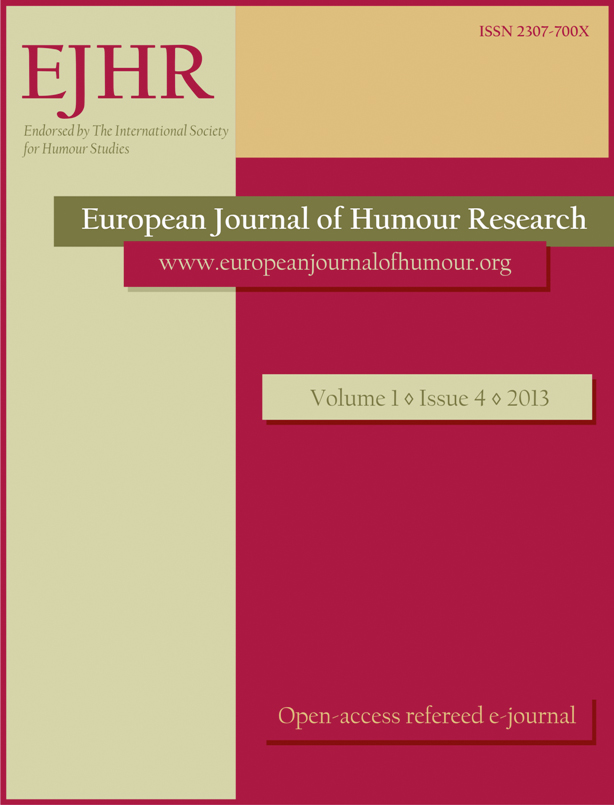
This paper investigates the role of humour in TED talks, which are popularising speeches aiming at knowledge dissemination. Through the analysis of humour used in Eugene Cordero’s 2012 talk ‘Improv Everywhere: A TED speaker’s worst nightmare’, Sebastian Wernicke’s ‘Lies, damned lies and statistics (about TED talks)’, and Julia Sweeney’s ‘It’s time for ‘The Talk’’, the paper analyses TED talks as an innovative tool of popularisation, which breaches the typical triangularisation ‘scientist-mediator-audience’, bringing scientists directly into contact with their audiences. Using classifications of humour theories described by Raskin (1985) and Attardo (1994), the paper analyses how humour in TED talks arises from a pleasant psychological shift of incongruity, when it is the “consequence of the discrepancy between two mental representations”; from a sense of superiority, when a person laughs about his/her own misfortunes or of others; or from a release reaction, when laughter is used to release tensions deriving from taboo topics, such as sexuality, politics, and religion. The talks show how humour is an endemic feature of this genre of popularising texts. In contrast with other forms of ‘canonical’ popularisation, these talks are not only delivered in a simple, clear, original, and relevant way, but also in a way that is enjoyable for the audience, which actively interacts with the speaker through humour.
More...